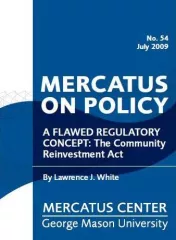This research summary addresses whether more regulations lead to less safety. Psychology, economics, and organizational science suggest that too many regulations—particularly highly detailed regulations—may make society less, rather than more, safe.
American business must comply with a lot of rules. There are over 165,000 pages of federal regulations, almost 20,000 of which were added in the past four years. One of the chief rationales for many regulations is safety, and, as Congress expands regulators’ mandates, regulators concentrate on writing highly detailed and specific rules to cover perceived gaps in the law. For the sake of protecting the health and safety of workers and consumers, the federal government accepts the significant drag regulatory compliance puts on the U.S. economy and the burden it places on all businesses, but especially small ones.
Psychology, economics, and organizational science, however, suggest that too many regulations—particularly highly detailed regulations—may make society less, rather than more, safe. In “Regulatory Overload: A Behavioral Analysis of Regulatory Compliance,” occupational psychologists and economists look at the behavioral effects of regulatory overload on businesses. They find that too many, and too detailed, regulations can reduce compliance, discourage innovation, and fuel uncertainty, ultimately making Americans less safe.


